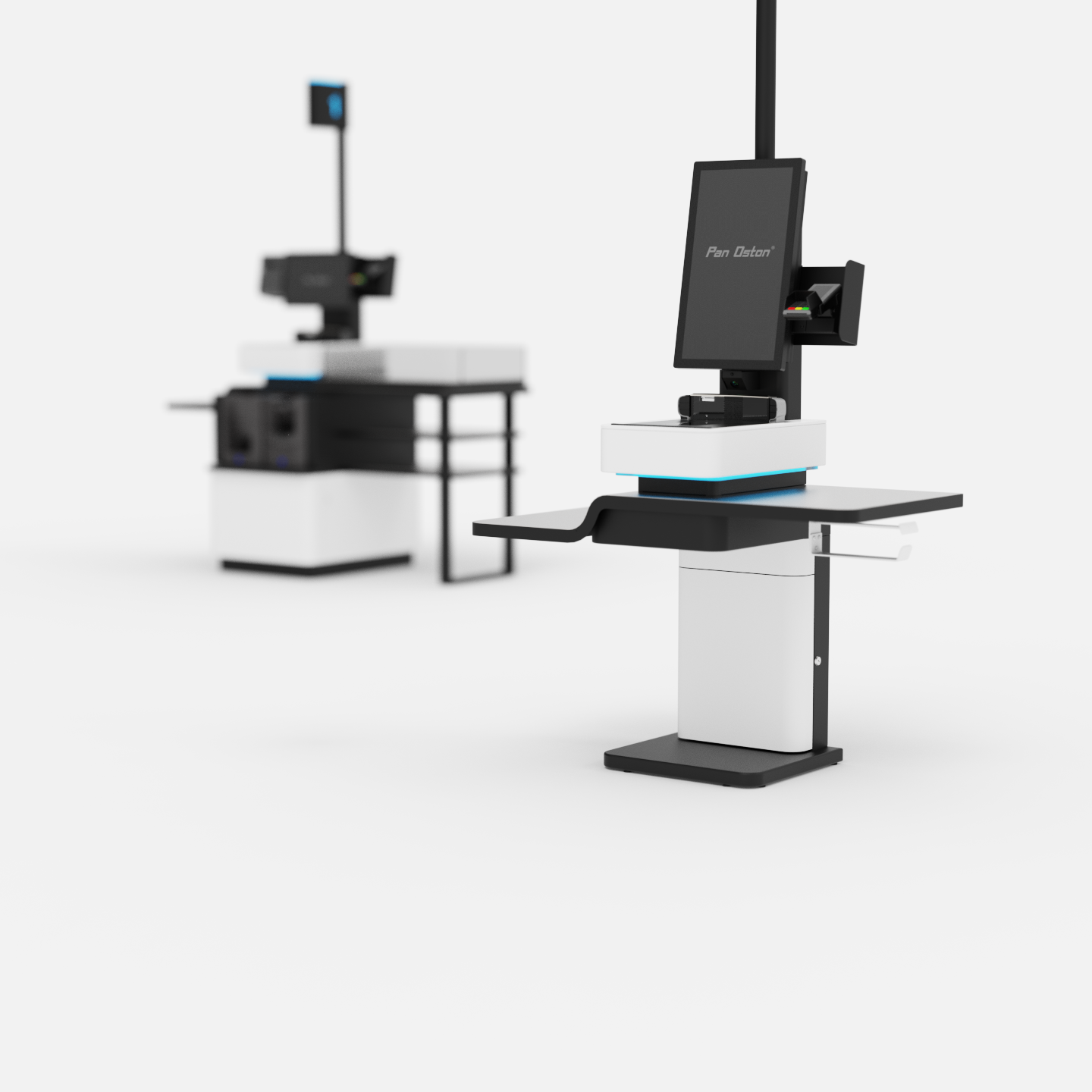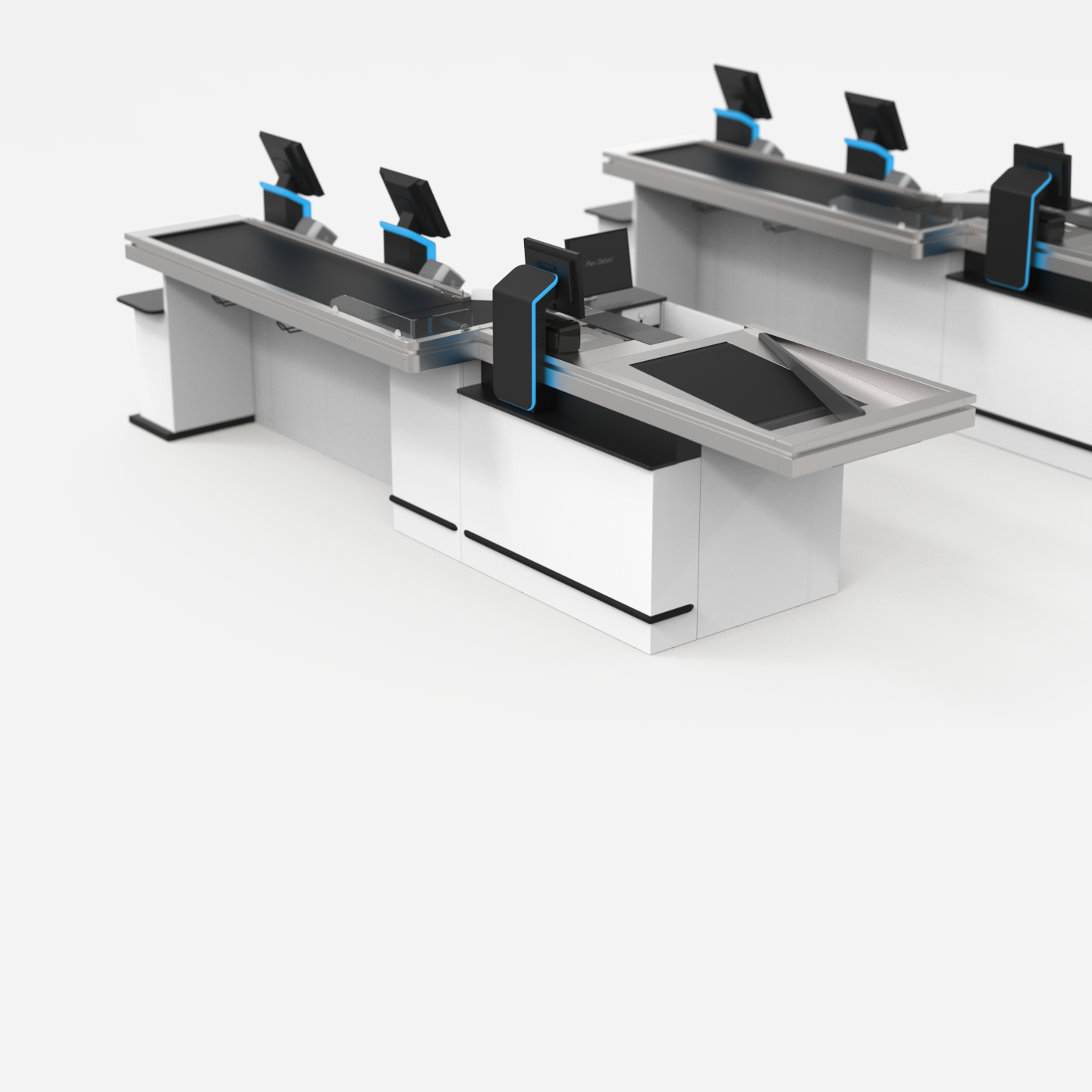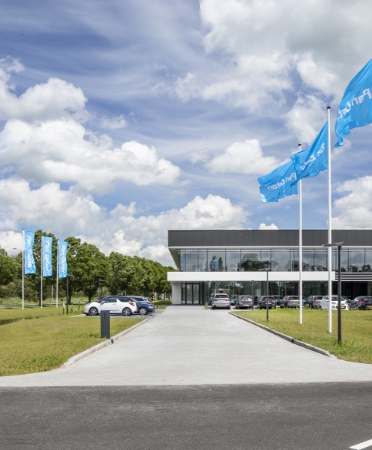Enhance your customers’ checkout experience with AI
While many forms of AI technology are still in their infancy, artificial intelligence (AI) for self-service solutions in Retail is developing at pace. It is proving invaluable in enhancing the user experience of self-checkouts and self-service kiosks. When AI is deployed effectively in the checkout zone, it often simplifies, saves time, and delivers customers a great all-around checkout experience. As customer expectations remain high and, in many instances, are increasing, AI can help you not only to meet but also exceed them. This can win retailers valuable sales and long-term customer loyalty. AI can help you stay ahead of competitors by delivering an exceptional user experience that leaves your customers looking forward to their next interaction in your shop/store.
As self-checkouts and self-service kiosks evolve far from the basic initial models to the advanced digital models of the present day, AI has a key role in their ongoing success. Whether retailers opt for a self-checkout with a select few AI features or an advanced and award-winning future-proof self-checkout like our very own SLIM Balance self-checkout, there is much to be gained from AI for both customers and retailers. We explore AI technologies that enhance self-service solutions and look at the future of AI in self-service solutions.
AI TECHNOLOGIES THAT ENHANCE SELF-SERVICE SOLUTIONS
AI technology can enhance a range of self-service solutions with advanced features and new approaches to established retailer and business challenges. As AI technologies continue to develop, the possibilities for enhancing self-checkouts and self-service kiosks are almost endless. AI is likely to play a key role in their future development. Many exciting AI technologies are already making their mark on self-service solutions today or are set to do so in the future. From computer vision and machine learning to natural language processing and generative AI, there are many forms of AI technology to explore in self-service solutions.
Computer Vision
Computer/machine vision is a transformative type of AI that brings a world of possibilities to self-service checkouts and kiosks. It uses advanced cameras and AI to automatically detect products/items placed on the platform or the scales at a self-checkout. This is particularly useful for detecting products that are difficult to put a barcode onto, like fruits and vegetables. Customers who use a self-checkout with machine vision can simply place their items onto the platform or scale of the self-checkout and let AI technology accurately identify the items they want to purchase. Once they have confirmed the product selections made by the technology, they can complete the checkout process and pay for their shopping as usual.
Adopting computer/machine vision at your self-checkouts will significantly improve your customer’s user experience. They will be able to complete the checkout process in record time without having to manually identify items, select them on-screen and navigate an endless number of menus to find non-barcoded items. As customers will not be required to pick items manually, they can complete the checkout process faster, which results in shorter queues for all customers. It is a great example of how AI tech can simplify the checkout process, making it more straightforward and smoother for the customer.
For the retailer, there are several significant benefits to machine vision technology. As it makes selecting products easier at checkout, it results in a faster checkout flow, increased throughput, and reduced shrinkage. This allows your shop/store to serve more customers and deliver an exceptional user experience, which can help to win their loyalty and encourage them to return. Computer vision can even reduce shrinkage caused by customers who incorrectly select products on-screen. The significant user experience and efficiency gains that can be made from this technology make it a popular technology for forward-thinking retailers.
Our Red Dot Design award-winning self-checkout, the SLIM Balance, delivers advanced computer vision technology. It makes selecting non-barcode products a breeze for customers and eliminates the hassle of navigating long product menus on screen. The state-of-the-art SLIM Balance self-checkout is ready for the future with all the features that a modern retail environment demands. Its sleek and contemporary design, advanced AI technology, and computer vision make it a great choice for retailers.
Machine Learning
Machine learning plays a vital role in many AI-enabled products and services we use daily. It also powers AI technology in self-service solutions, including computer vision, fraud detection & security scales and weight verification. For computer vision, machine learning models train the vision systems to help them accurately identify different products without relying on barcodes. The models study images and videos to improve their recognition capabilities and reduce product recognition errors. The role of machine learning technology is far from limited to assisting computer vision; its role in other technology is equally significant.
It is particularly adept at powering fraud detection and security scales technology, which aim to reduce shrinkage in the checkout zone. Machine learning algorithms detect notable patterns and anomalies associated with instances of shrinkage, including user error, theft and fraud. The technology is constantly learning from previous instances, which further increases its accuracy in identifying instances of shrinkage. Self-checkouts and self-service kiosks with fraud detection and theft detection capabilities often have front and top-mounted cameras, which detect deliberate theft, and security scales, which are effective at identifying shrinkage caused by user error and some instances of deliberate theft. The powerful combination of AI-enabled cameras and security scales is particularly effective at countering shrinkage and making the most of AI technology.
Machine learning technology contributes to improving customers’ user experience. By supporting the identification of non-barcode products, it speeds up the checkout process and reduces on-screen product identification for customers, both of which create a faster and smoother shopping experience. Fraud/theft detection and security scales reduce the need for manual product checks and verifications by checkout hosts, which helps ensure that customers can complete the checkout process as fuss-free and fast as possible.
The Pan Oston SLIM Balance self-checkout is equipped with AI-enabled cameras supporting AI theft prevention and integrated security scales. The SLIM Balance’s front and top-mounted cameras are designed specifically for theft prevention and fraud detection, and the security scales deploy weight verification technology to compare an item's weight against its expected weight. Where discrepancies are identified, a manual review by a checkout zone assistant is triggered, and instances of shrinkage are reduced.
 (Groot).jpg)
Natural Language Processing
Natural language processing technology is helping to improve the accessibility of self-service solutions and allows customers to interact with self-service kiosks and self-checkouts using voice commands. While voice control functionality has been available in self-service solutions for some time, it has not always been able to identify voice commands made using natural language accurately, leading to frustrated customers and lower-than-expected accessibility for customers who are living with a disability.
Fortunately, natural language processing technology powered by AI can more accurately understand the everyday language that customers use rather than just a number of predetermined prompts and phrases. This helps customers who cannot use a touch screen or prefer to use voice commands to easily interact with self-service solutions and not be excluded from using them. Whether customers use voice commands to control a self-checkout or a kiosk or to request help, natural language processing makes the whole process much smoother and fuss-free. This also ensures that everyone can enjoy a great user experience, no matter how they use and interact with self-service solutions in shops.
At Pan Oston, we are committed to developing innovative solutions to support accessibility across our product families and tailor-made self-service solutions. Many of our self-checkouts and self-service kiosks support audio navigation with text-to-speech functionality, which makes on-screen information and selection menus more accessible. In addition, our solutions provide physical buttons as an alternative to touchscreen operation to improve accessibility further.
Generative AI
Generative AI is very much the star of AI. It is the core technology behind the leading AI platforms, including Chat GPT and Co-Pilot. Despite its prominence within these established and popular AI tools, its role within self-service solutions, including self-checkouts and self-service kiosks, is still being defined as AI technology advances. Its key applications for self-service solutions include enhancing customer interactions, delivering personalised retail experiences to customers and optimising checkout processes. In terms of customer interactions, Generative AI can be used to power virtual assistants and customer support agents. It can offer real-time, human-like responses to customer queries. If they encounter an issue when scanning products at a self-checkout, it can make tailored suggestions and provide specific instructions without relying on input from checkout assistants or hosts.
The most significant potential of generative AI is linked to its personalisation capabilities. It enhances the customer experience by providing tailored products and recommendations based on a customer’s purchase history, indicated preferences and shopping habits. This helpful feature helps customers discover additional useful products they may not have thought of and save money, both of which contribute to the delivery of an excellent shopping experience. In addition, generative AI can create personalised promotions or discounts for customers at the self-checkout or self-service kiosk. These promotions can include the products that make up their shopping, which helps customers save money on what they are already buying. The opportunities for personalisation with generative AI technology are almost endless. In some cases, it can tailor the checkout experience, including altering the on-screen checkout layout and preferences based on a customer’s previous experiences.
Optimising the checkout process is another area where generative AI can play a key role. It is particularly effective at helping retailers train checkout hosts by creating dynamic training simulations. This can also be used to test different self-checkout designs and configurations. These features are equally beneficial to customers and retailers. The former will enjoy an efficient and smoother user experience, while the latter can benefit from the efficiency gains that are made and the impact that these have on the bottom line.
At Pan Oston, we are excited by the almost endless possibilities offered by generative AI technology and how it can help improve the customer experience with self-service solutions. We remain focused on continuously improving our self-checkouts and self-service kiosks with award-winning design and reliable hardware that supports retailers' adoption of the latest AI technology.
.jpg)
THE FUTURE OF AI IN SELF-SERVICE SOLUTIONS
The future of AI in self-service solutions is exciting and presents many opportunities to retailers looking to enhance the user experience they deliver to customers. AI has the potential to further enhance the efficiency, accessibility, and user-friendliness of self-checkouts and self-service kiosks. As technology continues to evolve, AI is set to play a critical role in the ongoing advancement of self-service. Let’s explore some key areas where AI could benefit self-service solutions.
Frictionless Checkout
Frictionless checkout technology is already beginning to transform checkout zones. However, AI is likely to accelerate its impact on the checkout experience. The goal of enhancing the customer experience while reducing customer effort is set to become very achievable. The potential of AI in delivering gesture control capabilities to self-checkouts, which allows customers to interact without using touchscreens, could be transformative. It would not only improve accessibility but also give customers more choice as to how they interact while delivering efficiency gains. AI-powered kiosks could also use facial recognition or fingerprint scanning for user authentication. This would improve security and streamline the payment process, as customers’ preferred payment methods could be stored by checkout systems and recalled following authentication.
Advanced Personalisation
Many self-checkouts and self-service kiosks already support a degree of personalisation. With the addition of AI, personalisation can be taken to the next level to enhance the shopping experience further. Advanced personalisation is likely possible with AI, which may involve tailoring each checkout experience to suit each individual customer. AI can draw on customer profiles, including purchase history, to deliver customised offers, checkout experiences and on-screen layouts to each customer. This has the potential to provide exceptional customer experiences based on a winning combination of great service and user experience.
Real-Time Issue Resolution
Encountering an issue at a self-checkout is a frustrating aspect of the customer experience, and currently, it often has to be solved with the intervention of a checkout host. AI technology and machine learning, in particular, have the potential to deliver real-time issue resolution without relying on input from checkout hosts. The technology might be able to detect and solve simple issues such as the mis-scanning of products or pricing errors. Imagine machine learning being combined with predictive analytics. In that case, it may be able to forecast likely mistakes and times of peak demand, which will help retailers take pre-emptive action to mitigate the impact of these issues and maintain checkout throughput.
Advanced Fraud & Theft Detection
Shrinkage remains a key issue for retailers, and while existing solutions are beginning to mitigate its impact, AI could be set to provide advanced capabilities to reduce it further. Machine learning models could be used to detect suspicious activity in the checkout zone, including mis-scanning or item swapping in real time, and bring this to the attention of checkout hosts and assistants. AI may also be able to highlight inconsistencies in pricing and identify unusual scanning activity that may be a precursor to fraud or theft.
Predictive & Proactive Maintenance
Maintenance issues in the checkout zone have the potential to significantly disrupt the customer flow through your checkout zone, especially if they occur during peak times. AI technology has the potential to proactively monitor self-checkouts and self-service kiosks and deliver predictive and proactive maintenance solutions to reduce the impact that maintenance issues can cause. Machine learning may be able to predict when components or hardware items are likely to fail so proactive repairs/replacements can be made before problems occur. AI can also enhance the capabilities of remote troubleshooting systems by assisting with the diagnosis and resolution of common issues remotely, which minimises downtime and helps customers enjoy a positive checkout experience.
Delivering AI-Powered Self-Service Solutions For Retailers
At Pan Oston, we design and deliver innovative AI-powered self-service solutions to established retailers and businesses. Our award-winning design team designs self-checkouts and self-service kiosks with reliable hardware and exceptional design that supports the adoption of AI solutions that enhance the user experience for customers and deliver efficiency gains & increased sales for the businesses that adopt them.
Our award-winning SLIM Balance self-checkout incorporates AI-powered hardware, including innovative security scales to combat shrinkage and a top-mounted camera for anti-theft solutions. The SLIM Balance is ready to help retailers transform their checkout zones and take advantage of AI's opportunities.
Why not find out how the SLIM Balance self-checkout can help you bring AI technology into your checkout zone? Our Red Dot Design Award-winning SLIM Balance self-checkout has helped retailers improve user experience, improve efficiency and increase sales. We also have a wider range of self-service solutions available in our BLUE FIRE product family that can suit a wide range of retail and business applications. It’s time to benefit from the award-winning design, software & hardware independence and easy servicing options that Pan Oston self-service solutions deliver to retailers and businesses.
Businesses that partner with us benefit from the experience and expertise our team of over 200 specialists has gained from delivering successful self-service solutions to established international retailers and businesses throughout Europe.
Contact Our Self-Checkout and Self-Service Kiosk Specialists
Our self-checkout and self-service kiosk specialists are ready to help you successfully adopt AI and deliver an exceptional user experience within your checkout zone. Why not contact us to find out how our AI-powered self-service solutions can help you provide a great user experience to your customers?


.jpg)

.jpg)